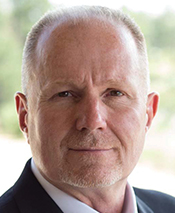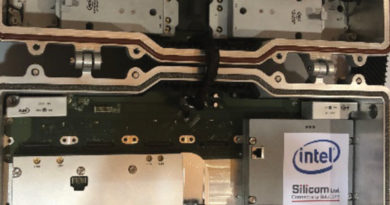The Next Generation of HFC Networks
By John Williams
Over the next several years you will see changes in how the cable industry will leverage HFC networks. As an industry we plan to leverage our coaxial cable networks for the long-term future. In doing so we will ensure that all operators from across the globe can have this same long-term plan in place as an option. Continuing to leverage these assets in a strategic manner is one way in which we will remain competitive, while meeting the growing demands and insatiable appetites of the subscriber for more bandwidth. The 10G initiative announced at the CES in January has accelerated efforts to deliver 10 gigabit service over coaxial cable. This makes strategic efforts a big part of how operators are planning to reach the 10G vision and which technologies will be best to use.
These changes will start by pushing newer technology closer to the customer, which allows operators greater flexibility in delivering services. As these technologies are implemented, you will see improved signal quality and data capacity in conjunction with extending the life of the coaxial plant. As technology is pushed closer to the customer, the goal is to operationalize the migration path in the most simplistic way. By leveraging advancements in silicon and other technologies that did not exist just a few years ago, we can deploy with much greater visibility into the network.
Creating a tool bag
As most of us know by now, one size does not fit all scenarios when it comes to our networks. What makes sense for one operator, may not for another. This is based on things like demographics, densities and subscriber demand, not to mention cost factors and time to deploy. As an industry, we must ensure we have a larger tool bag that allows cable operators flexibility and scalability for their specific operating models. When looking at all the different architectures and scenarios that exist across the globe, we must consider how to best scale the available assets and when. Cable operators should have the ability to use a mixture of tools toward implementing their roadmaps with anticipation for the technologies on the horizon. Recently CableLabs announced that it started working on DOCSIS 4.0, which is to include full duplex (FDX) DOCSIS, extended spectrum DOCSIS (ESD), and low latency DOCSIS (LLD). With DOCSIS 4.0 on the horizon, it will support different options to increase bandwidth capacity and it will support convergence of the technologies over time.
A quick look at FDX and ESD

- Full duplex DOCSIS (which currently requires an N+0 architecture) — This architecture leverages a portion of the spectrum for simultaneous bi-directional traffic, which is accomplished using echo cancellation, interference groups and DOCSIS scheduling among other things.

- Extended spectrum DOCSIS — This architecture couples the evolution of extended spectrum in the HFC plant with advancements in DOCSIS technology. ESD does not require a Node+0 architecture, which means it will work with the majority of current network topologies.
The HFC network
With the increasing pressure on the physical layer of the network to create incremental capacity, we must adapt. These networks will require some sort of intervention to keep up with new product and service offerings that customers have come to expect, but mostly to keep pace with the Internet traffic growth that continues to rise steadily. The increase in Internet bandwidth demand is one of the primary reasons we touch the outside plant network today. Internet connectivity has become a very competitive landscape over the last decade, with the majority of the operators increasing data speeds to the customer on a consistent cadence. If we would have had listened to those with insight 20ish years ago that data capacity would drive the reasons to touch the network and if we would have used more of a capacity engineering approach to place our optical nodes in strategic locations, this would have produced more balanced service groups that would have been evenly distributed for data capacity. Nevertheless over the last decade, operators have been performing node segmenting, splitting, or in some cases doing Node+0 upgrades. As expected, the results of this activity have benefited operators by systematically driving fiber deeper into their networks closer to the customer, thus reducing amplifier cascades and ultimately improving network performance.
What is “Extended Spectrum” HFC?
The answer is simple. We have been following this bandwidth expansion path since the beginning, so moving the spectrum to 1.8 GHz or higher is simply the next step in the HFC network evolution. The cable industry has taken a long-established path to more bandwidth and has now placed a name on it called “extended spectrum.” If you look back at the history of our HFC plants it was not so long ago that we were upgrading to 550 MHz, then 750 MHz, closely followed by 860 MHz, then 1 GHz, and on to 1.2 GHz. Many of us who have been around since the dawn of cable TV can probably even remember all those incremental steps prior to 550 MHz with long amplifier cascades, which was prior to adding the “F” in HFC. 1.8 GHz is just the next step in spectral capacity expansion on our way to the possibility of a 3.0 GHz HFC network, continuing to leverage our valuable assets as we have always done successfully.
Why extend the spectrum?
Why not? Having the ability to leverage the current assets of our networks in a manner that does not greatly change how operators invest capital in a scaled manner is the key fundamental of “extended spectrum.” Keeping it simple for the field operations teams on how we operate the network is a key advantage to extending the spectrum. The biggest change to the HFC plant will be pushing the upper limit of the carriers higher in the spectrum. Another benefit to “extended spectrum” is that it will allow for continued use of the amplifier cascades, which fits into the current tree and branch topology of our HFC networks. Many details are still being worked out, but the goal is to perform drop-in upgrades to systems that were properly designed and built to a true 750 MHz or higher. A properly designed and built system is highly dependent on the accuracy of the maps you started with, the designer doing the work, the line equipment being used, and the distances in the spans of the coaxial cable. All of these potential issues, plus the variables that went into the last system upgrade, can have an impact on this next step. With this in mind, operators will now have another tool in their toolbox that will offer increased bandwidth while also increasing their speed to deploy. As an added benefit, “extended spectrum” will allow cable operators to defer capital investments over a much longer period of time by using the business as usual (BAU) approach, while pragmatically driving fiber deeper into their networks, getting closer to a Node+0 network.
All things considered
Although this seems new to many cable operators, this is an effort that has been being going on for almost five years. By working with CableLabs, SCTE, and various operators globally, we have begun to build the long-term vision. While the first step has been determined to be 1.8 GHz, we are completing characterization procedures for components out to 3.0 GHz. Looking forward and planning towards a 3.0 GHz system is to future proof the network for the next step, or some might say for the next generation.
So how are we looking at this? One example is taps and passives. If we are going to change taps and passives, why wouldn’t we require the frequency response of the housing to support 3.0 GHz now and contain a 1.8 GHz faceplate from day one? Consideration for the operating levels of the actives is another area for planning. How do we maintain a realistic total composite power (TCP) while extending the spectrum out to 1.8 GHz? Do we minimize the tilt? Run levels flat above 1 GHz? Stair-step it or some other combination? Do we look at how to use echo cancellation in actives allowing for flexibility in changes to the upstream split? When speaking about the upstream split, what is the “right” upper frequency limit — 204 MHz, 300 MHz, 492 MHz, 684 MHz or beyond? Whichever direction the answers to these questions take us, we are looking to ensure that there are flexible options for all operators. All of these considerations must be evaluated to ensure that a proper solution is provided that does not break our powering the network, reduce overall performance, or dramatically increase complexity.
How does distributed access architecture fit in?
This is currently considered a pre-requisite in a move down the FDX or ESD path. Distributed access architecture (DAA) will be the lever that allows operators to push carriers that are typically generated inside the operator’s critical facilities out into the plant and closer to the customer. These carriers are now generated in a small module inside the node, helping to produce better performance and fidelity of the RF signal. Another added benefit of DAA is the migration away from analog optical transport, which has wavelength and performance limitations over longer distances. This will give cable operators the ability to increase efficiency and usage of their existing fiber network. To provide various options in the tool bag, there are a number of options that operators will have to consider when looking to deploy DAA. The current options are R-PHY and R-MACPHY. While both technologies move the edge QAM modulator and upstream receiver electronics technology to the node, one moves the DOCSIS MAC and PHY capabilities to the node and the other just moves the PHY capabilities to the node.
The possible convergence
While the current goal is to deliver 10 Gbps over coaxial cable, we are looking further down the road on how to deliver 25 Gbps utilizing spectrum up to 3.0 GHz. This roadmap may require the convergence of FDX and ESD to obtain these goals. With a historical look back at the cable telecommunications industry, it is clear that new technology and innovation has been the enabler to success. We don’t know, what we don’t know! The crystal ball does not tell us how our networks should be built for the future or what new application will drive the needs of our customers, but the best we can do is to follow the trends and be prepared.
Maybe this is where we land

 John Williams
John Williams
VP, OSP Engineering & Architecture
Charter Communications
John Williams is the VP, OSP Engineering & Architecture for the Advanced Engineering group in Englewood, Colorado. He is responsible for leading a team that develops new technology solutions that are reliable, simple and cost effective for the outside plant. John has held leadership roles in technical operations, engineering operations and network management in various capacities throughout his 30+ year career. He joined Charter in 2006 as Director of Engineering, moving to Advanced Engineering in 2013 where he was appointed to his current position in 2016.



